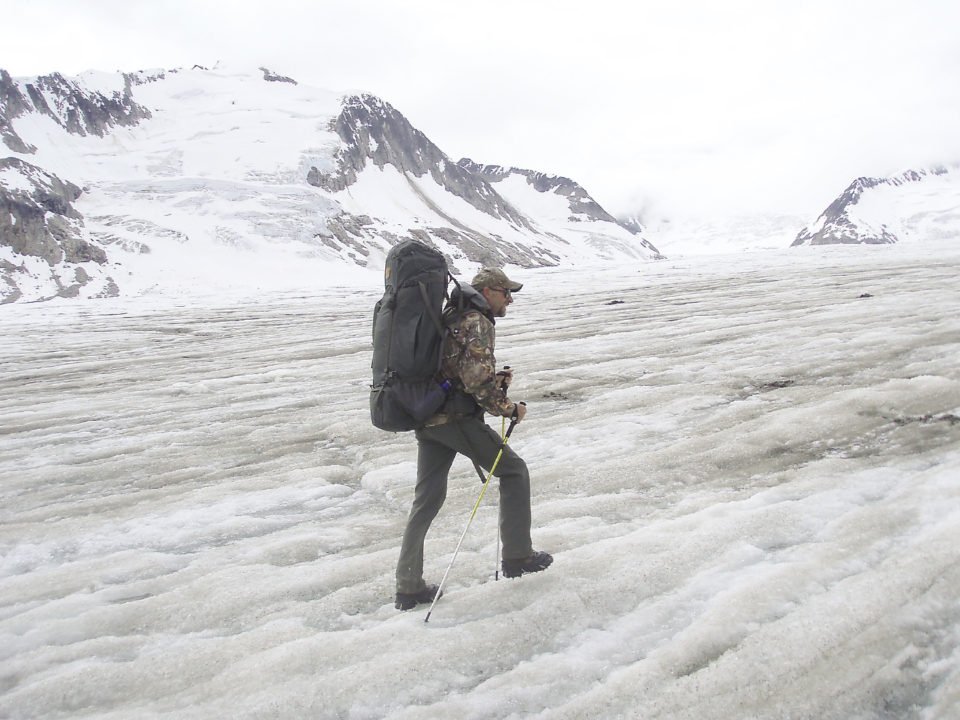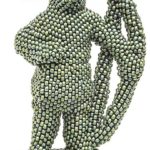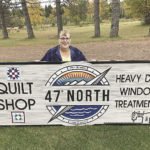If there is an elite among the hunting fraternity, it is the hunters of wild sheep. Found at high elevations in some of the wildest mountain ranges on Earth, various species of sheep are pursued by a dedicated few. Bill Hanlon, of Sparwood, British Columbia, is one of them. His home province contains three of four North American wild sheep species: stone sheep, Dall sheep and Rocky Mountain bighorn sheep. He has been successful in hunting all three.
While hunting licenses for stone sheep and bighorns can be purchased over the counter in B. C., Dall sheep tags are only available by lottery drawing. In 1999, Hanlon and two friends, Warren Ward and Mike Roch, drew tags for Dall sheep in the 2.4 million acre Tatshenshini-Alsek Provincial Wilderness Park in the northwestern corner of the province, which combined with the Wrangle-St. Elias and Glacier Bay National Parks in Alaska and Kluane National Park in Yukon encompass the largest protected area in the world and is an UNESCO World Heritage Site. They planned a 10-day backpack hunt in roadless, wilderness mountains—a world of rock and ice.
The hunt went well. Two of the hunters shot their rams and they were looking for a third. They were walking along a glacier, above the treeline, when one of the hunters found a stick and then another.
“Finding these artifacts, we knew someone had been there before us,” Hanlon said.
Looking more closely at their find, they realized that “someone” had been there long ago. The sticks appeared to fit together forming a long staff or pole. Studying the wall of glacial ice, Ward spotted something.
“I think I see the person who lost all this stuff,” he told his companions.
There, in the ice, was a mummified body. The hunters knew they had made an archaeological discovery. When they returned from the hunt, they reported the mummy and turned over the artifacts they found to the Yukon Berengia Interpretative Center. Professional archaeologists then reached out to the local Champagne and Aishihik First Nations, beginning a respectful, collaborative effort to recover and study the mummy. First Nation representatives agreed to allow archaeologists to study the mummy for a year, then it would be returned to them.
The importance of the discovery was soon apparent. Radio-carbon dating of the artifacts placed the age of the body between 300 and 550 years, making it the oldest human remains discovered in the Americas. It was also the second glacial mummy discovered in the world, following Otzi the Iceman, circa 3,300 B.C., found in the Alps in 1991.
The mummy was well-preserved, so scientists were able to learn much about the man. Pollen in his clothing, made from the pelts of Arctic ground squirrels, revealed that he was travelling in the summer. Although he was about 50 miles inland, his stomach was filled with seafood, indicating that he was travelling from the ocean. He was determined to bea Tlingit, about 20 years old and about five feet, eight inches tall. Although the body was dismembered by the shifting ice, there was no sign of trauma to suggest he had encountered a calamity, such as falling into a crevasse. More likely, he was caught in inclement weather in the high country and died of hypothermia.
The tribal people named him Kwäday Dän Ts’ìnchi, which means “Long Ago Person Found.” Remarkably, mitochondrial DNA testing found 17 living maternal relatives among the local people. All but two were members of the Wolf Clan, suggesting so, too, was Kwäday Dän Ts’ìnchi. His remains were cremated and scattered over the glacier where he was found.
The fortuitousness of the discovery almost seems as if it was meant to be. The year 1999 was then the warmest on record, so the mummy was released from its tomb of ice. Had it not been discovered by the hunters it would have decomposed or been torn apart by ever-present predators. The hunters were in the right place at the right time.
Hanlon has since returned to the site of the discovery three times since 1999. The second trip was in 2003, when he and Roch were lucky enough to draw Dall sheep tags on their first attempt, allowing them to hunt the country again and pay their respects to Kwäday Dän Ts’ìnchi. He later accompanied a prominent ethnobiologist who studied the remains to the site. In 2014, he made a fourth trip with adventure writer Jon Turk. Hanlon said 1999 was the first record-setting warm year, but that the warming climate “has been breaking records ever since.” The glacier where the mummy was found has significantly receded during the last two decades.
Hanlon continues to hunt and is involved in the protection of wild places and the hunting heritage. He is co-chair of the British Columbia chapter of Backcountry Hunters and Anglers and sits on the North American Board of Directors. He is also the co-founder and chair of the Hornaday Wilderness Society, a wilderness advocacy group in the Elk River Valley where he lives. William T. Hornaday was an early pioneer of the wildlife conservation movement who is credited with saving wild bison from extinction.
Hanlon is a classic hunter, who prefers to travel by foot or horseback in wilderness areas. He believes hunting should be physically challenging and respectful to the land and the hunted animal. At times he carries an old rifle chambered in .303 Savage, a caliber used by historic hunters such as Hornaday. He believes this approach to hunting was what led him and his companions to the discovery of Kwäday Dän Ts’ìnchi. Of the discovery, a Tlingit elder once told him, “You are hunters of right heart and spirit.”
Hanlon said he has never received a higher compliment than the elder’s words.




